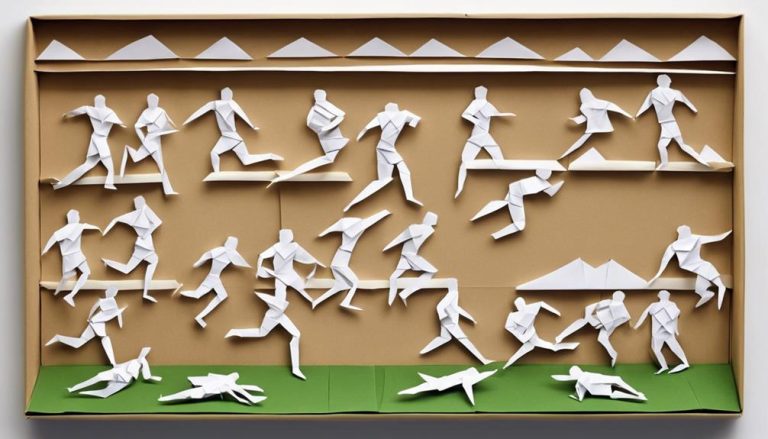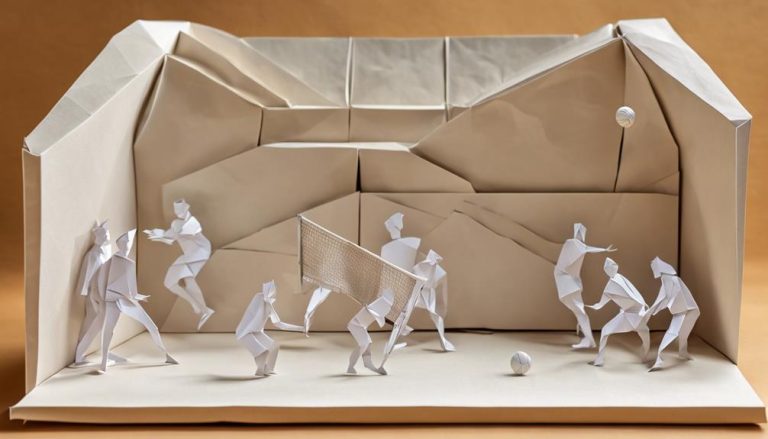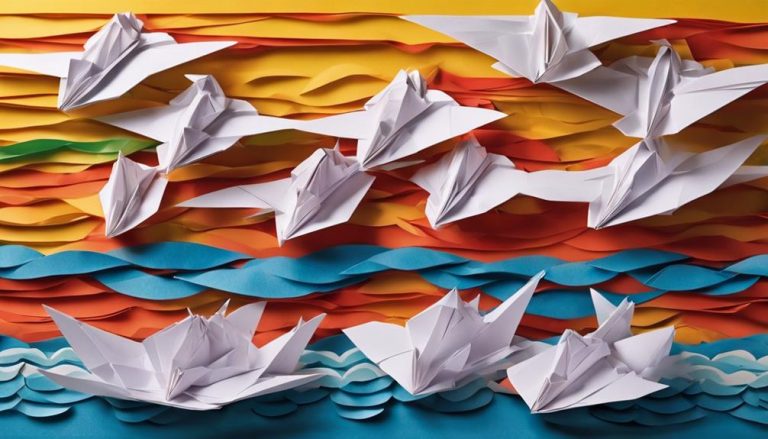General Rules of Oina Sport
So, you've heard of the ancient sport of Oina, but do you truly understand its intricacies? Let's investigate into the general rules that govern this traditional game. From the field dimensions to the specialized equipment used, every aspect plays a vital role in the gameplay. But what about the strategies employed by teams and the scoring system that determines the victor? Stay tuned to uncover the secrets behind this fascinating sport that has stood the test of time.
Origins of Oina
Exploring the origins of Oina reveals a fascinating journey into the historical roots of this traditional sport. Oina, a game that evolved over centuries, has deep cultural significance and is steeped in traditions that have been passed down through generations. The origins of Oina can be traced back to ancient Romania, where it was played by shepherds to showcase their strength, agility, and coordination.
The evolution of Oina from a simple pastime to a structured sport is a proof of its enduring popularity and importance in Romanian culture. What began as a way for shepherds to stay active while tending their flocks has transformed into a competitive sport that continues to thrive today. The cultural significance of Oina is evident in the rituals and customs that surround the game, making it more than just a physical activity but a symbol of community and heritage.
Traditions play a crucial role in Oina, with players adhering to age-old rules and practices that have been preserved over time. The respect for tradition is a central theme in Oina, highlighting the importance of honoring the past while embracing the future. As Oina continues to evolve and adapt to modern times, its cultural roots remain firmly embedded in the fabric of Romanian society, making it not just a sport but a living connection to the past.
Field and Equipment Requirements
When setting up the field for Oina, make sure to follow the specific guidelines for proper field dimensions and markings. The equipment required for Oina includes a bat, a ball, and protective gear for the players. Understanding the field and equipment requirements is essential for a fair and organized game of Oina.
Field Setup
To guarantee a fair and competitive game of Oina, proper field setup is essential, including meeting specific field and equipment requirements. Setting boundaries and marking positions correctly is vital to make sure a smooth gameplay experience. Below is a table outlining the field requirements for an official Oina match:
| Field Setup | Dimensions | Marking |
|---|---|---|
| Field Size | 70m x 50m | White lines |
| Pitch Shape | Rectangular | Sideline & center |
| Pitch Material | Grass | Natural or synthetic |
| End Zones | 10m deep | Marked with cones |
These specifications are fundamental to maintaining the integrity and fairness of the game, providing players with a standardized environment for competition.
Equipment Needed
You will need specific equipment to adhere to the field and equipment requirements for playing Oina effectively. Safety precautions are essential, so make sure to wear appropriate athletic attire and footwear to prevent injuries. Additionally, it's important to have a regulation-size Oina ball for the game. Training techniques involve using the correct Oina bat, which should be smooth and sturdy for best performance. The field should have clearly marked boundaries and a designated pitcher's mound. A good-quality set of bases will also be necessary for gameplay. Finally, make sure that all players have access to water bottles to stay hydrated during matches. By following these equipment guidelines and safety measures, you can enjoy a safe and competitive game of Oina.
Team Formation and Positions
Let's talk about the vital ASPECTS when it comes to Oina sport – understanding player roles and duties, as well as strategic team formations. This knowledge is key to achieving success in the game and enhancing your team's performance on the field. By grasping these aspects, you'll be better equipped to contribute effectively to your team's overall strategy and gameplay.
Player Roles and Duties
Understanding the various player roles and duties in Oina sport is important for mastering team formation and positions. Player communication and teamwork are essential for a cohesive gameplay experience. Each player must understand their role and work together seamlessly to achieve success. Leadership plays a vital role in guiding the team towards victory, whether it be through setting an example on the field or providing direction during gameplay. Additionally, sportsmanship is key in fostering a respectful and fair environment among teammates and opponents alike. By embodying these qualities and fulfilling their specific duties, each player contributes to the overall effectiveness of the team, leading to a more enjoyable and successful Oina sport experience.
Strategic Team Formations
When strategizing team formations in Oina sport, players must carefully consider their positions on the field to maximize efficiency and coordination. Defensive tactics and offensive strategies play a critical role in determining the team formation. Effective team communication is essential to make sure everyone is on the same page regarding their positions and roles. Player positioning is key to both offensive and defensive plays, with each player having a specific area of the field to cover. Here is a simple breakdown of a common team formation in Oina sport:
| Position | Responsibilities | Skills Required |
|---|---|---|
| Forward | Scoring goals | Speed, accuracy |
| Midfielder | Linking defense and attack | Stamina, passing |
| Defender | Blocking opponents' advances | Tackling, marking |
| Goalkeeper | Preventing goals | Reflexes, positioning |
Gameplay and Scoring System
In Oina sport, the gameplay and scoring system are essential components that dictate the flow and outcome of the game. Player positioning is critical in Oina, with team members strategically placed to optimize defensive and offensive plays. Effective player positioning enhances the team's ability to score points and defend against the opposing team's advances. It is important for players to understand scoring techniques to capitalize on opportunities during the game. By mastering techniques such as precision throws and swift maneuvers, players can increase their team's chances of scoring.
Team communication plays a significant role in Oina, allowing players to coordinate their movements, strategies, and plays effectively. Clear and concise communication enhances team synergy, leading to a more cohesive and coordinated gameplay. Game strategies are important in Oina as they enable teams to anticipate their opponent's moves and formulate effective counter-strategies. By analyzing the game situation, adapting strategies, and making quick decisions, teams can gain a competitive edge and control the flow of the game.
Understanding player positioning, scoring techniques, team communication, and game strategies are important aspects of excelling in Oina sport. By mastering these elements, players can work together seamlessly, optimize their gameplay, and increase their chances of success on the field.
Penalties and Infractions
Understanding the rules of Oina sport involves a keen awareness of penalties and infractions that can impact gameplay dynamics greatly. Player conduct plays a vital role in maintaining the spirit of the game. In Oina, fair play and respect towards opponents are highly valued. Any player who engages in unsportsmanlike conduct, such as taunting, aggressive behavior, or using unfair tactics, may face disciplinary actions. These actions can range from warnings to temporary suspensions, depending on the severity of the infraction.
Officiating and rule enforcement are essential in ensuring a level playing field for all participants. Referees hold the responsibility of upholding the rules and maintaining order during the game. Any violations of the rules, whether intentional or accidental, can result in penalties that may affect the outcome of the match. It is vital for players to adhere to the regulations set forth to prevent unnecessary disruptions and maintain the integrity of the sport.
In Oina, the enforcement of penalties and infractions aims to promote sportsmanship and create a safe environment for all players. By understanding and respecting the rules of the game, participants contribute to a positive and enjoyable experience for themselves and others. Remember, fair play is at the heart of Oina, so play with honor and integrity.
Oina Tournaments and Championships
To fully immerse yourself in the world of Oina sport, exploring the domain of Oina Tournaments and Championships offers a thrilling glimpse into the pinnacle of competitive play. Tournament preparation is key to success in Oina competitions. Teams strategize meticulously, focusing on both physical conditioning and mental preparedness. Coaches play a significant role in honing championship strategies, analyzing opponents' weaknesses, and maximizing their team's strengths.
Team dynamics are essential during tournaments. The synergy between players, their trust in each other, and their ability to communicate effectively can make or break a team's performance. Understanding each player's role and capabilities is crucial for cohesive gameplay. Player performance is under the spotlight in championships. The pressure to deliver can be intense, but top athletes thrive under such conditions. Individual skills, like throwing accuracy and speed, are scrutinized, as well as teamwork, adaptability, and decision-making under stress.
Oina tournaments and championships provide a platform for athletes to showcase their talents, determination, and sportsmanship. The competitive spirit is palpable, driving players to push their limits and aspire for greatness. Witnessing the culmination of hard work and dedication in these high-stakes events is not only exhilarating but also a proof to the beauty of Oina as a sport that values skill, strategy, and teamwork.
Frequently Asked Questions
Can Players Use Any Type of Equipment, Such as Gloves or Helmets, During an Oina Game?
During an oina game, players can choose to wear gloves or helmets for safety precautions or personal preferences. Equipment regulations are minimal, allowing freedom for game strategy and individual comfort.
Are There Any Specific Rules Regarding Player Substitutions During a Game?
In the domain of player rotations during an intense game, strategy reigns supreme. Remember, it's not just about swapping players—it's about outsmarting opponents while adhering to injury protocols and fair play.
Is There a Minimum Age Requirement for Participating in Oina Tournaments and Championships?
To participate in Oina tournaments and championships, there is a minimum age requirement. Players need parental consent if under a certain age. It guarantees safety and compliance with regulations, fostering a fair and inclusive playing environment.
Are There Any Specific Guidelines for the Behavior of Spectators During Oina Matches?
Wondering about spectator conduct and sportsmanship etiquette in Oina matches? Remember, respect for players, officials, and fellow spectators is key. Cheer positively, avoid distractions, and follow any specific guidelines set by the organizers to safeguard a pleasant experience for all.
How Are Disputes or Disagreements Between Teams Resolved During a Game?
When disputes arise during a game, teams resolve them through open communication. Team members discuss the issue calmly and respectfully, aiming to find a fair solution. Clear communication is key to maintaining sportsmanship and resolving disagreements effectively.






